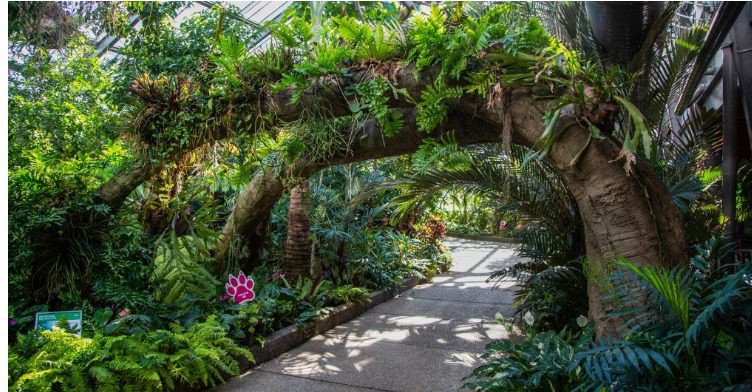There are a variety of plants that grow in natural harmony here, and each play a role in supporting our healthy environment and ecosystem. As students are guided through the ENMAX Conservatory by one of our conservation educators, they will discover the unique qualities of all plants and how their growth can impact sustainability in our world. Students will reflect on the question “how can we grow and farm plants in a sustainable way?” as they journey through our gardens.
Length: 60 minutes
Program times: 10:00 a.m., 11:15 a.m., 12:45 p.m.
Maximum students: 30
Cost:
- October-March: $240
- April-June: $295
Register Now
Kindergarten
- Demonstrate curiosity, interest, and a willingness to learn about the environment and community
Grade 1
- Describe some common living things and identify needs of those living things
Grade 2
- Describe the general structure and life habits of small crawling and flying animals, e.g., insects, spiders, worms, slugs; apply this knowledge to interpret local species that have been observed
Grade 3
- Describe the appearances and life cycles of some common animals and identify their adaptations to different environments
Grade 4
- Recognize that human activity can lead to the production of wastes, and identify alternatives for the responsible use and disposal of materials
- Demonstrate knowledge and skills for the study, interpretation, propagation, and enhancement of plant growth
Grade 5
- Observe, describe, and interpret weather phenomena; and relate weather to the heating and cooling of Earth’s surface
Grade 6
- Describe characteristics of tree and the interaction of trees with other living things in the local environment
Grade 7
- Investigate and describe relationships between humans and their environments, and identify related issues and scientific questions
- Investigate plant uses; identify links among needs, technologies, products, and impacts
- Analyze plant environments, and identify impacts of specific factors and controls
- Investigate life processes and structures of plants, and interpret characteristics and needs of plants in a local environment
Grade 8
- Investigate living things; and identify and apply scientific ideas used to interpret their general structure, function, and organization
- Investigate and describe the role of cells within living things
Grade 9
- Investigate and interpret diversity among species and within species, and describe how diversity contributes to species survival
- Identify impacts of human action on species survival and variation within species, and analyze related issues for personal and public decision-making
Grade 10
- Analyze plants as an example of a multicellular organism with specialized structures at the cellular, tissue, and system levels
- Relate climate to the characteristics of the world’s major biomes, and compare biomes in different regions of the world
Grade 11
- Bio 20: Relate photosynthesis to storage of energy in organic compounds
- Bio 20: Explain the role of cellular respiration in releasing potential energy from organic compounds
- Sci 14: Describe, in general terms, the structure and function of plant and animal cell parts; trace the development of the cell theory
Grade 12
- Bio 30: Describe a community as a composite of populations in which individuals contribute to a gene pool that change over time
- Sci 24: List and explain the requirements of photosynthesis as carbon dioxide, water, chlorophyll in chloroplasts and sunlight; list and explain the products as oxygen and glucose
On-Site Program Information and FAQ
